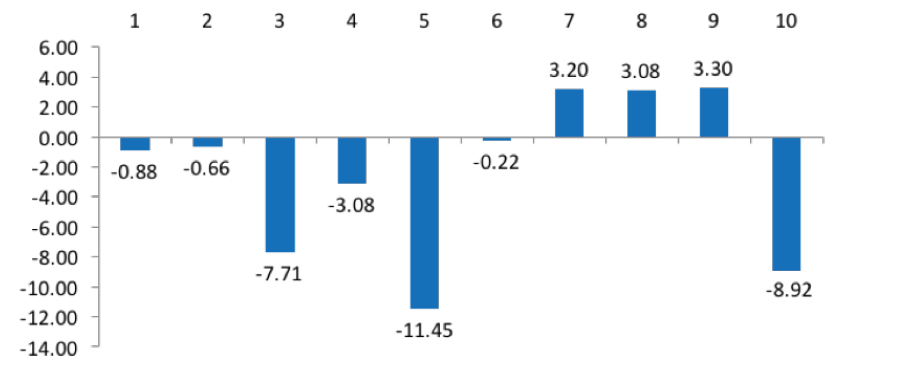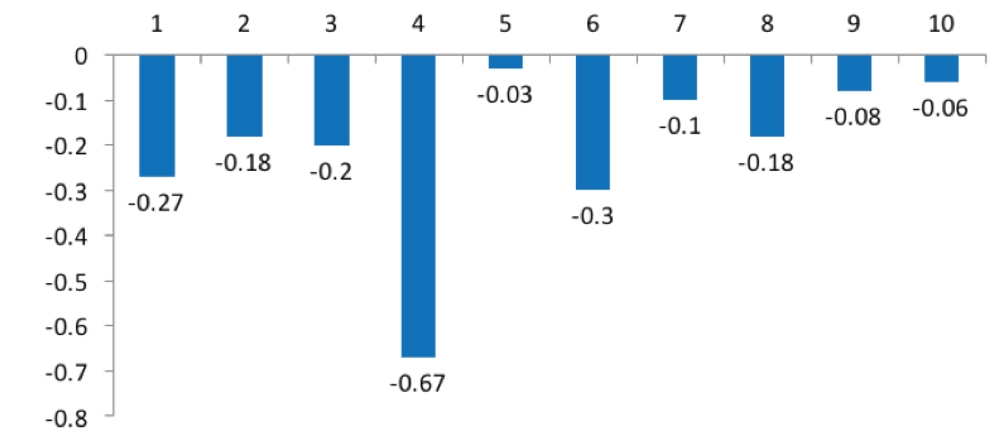Myth #3: Goldilocks Likes it Just Right and so Should Your Cows
From an energy perspective, offering the Goldilocks diet feeds the cow “just right”. Substantial research indicates that controlling energy intake during the dry period, in contrast to overfeeding energy, results in lower blood NEFA and BHBA after calving, less fat in the liver, and lower incidences of displaced abomasums (Dann et al., 2005, 2006; Douglas et al., 2006; Grum et al., 1996; Janovick and Drackley, 2010; Janovick et al, 2011, Richards et al., 2011, Mann et al., 2015; Zenobi et al., 2018). The lower NEFA, BHBA, and liver fat reflect lower rates of fat mobilization because feeding the cow “just right” changes their metabolism; therefore, their tissues are more insulin sensitive. Insulin is a hormone that reduces fat mobilization. Because of the improved metabolic profile and the lower cost and simplicity of feeding one diet for the entire dry period, Goldilocks diets have become widely adopted on dairy farms. What could be better? Cows are not underfed or overfed, but rather are fed “just right”!
BACKGROUND
Considerable research conducted during the past 20 years suggests that we no longer need to “steam up” cows, i.e., increase grain feeding to transition dairy cows during the final three weeks prior to calving. Steaming up cows was done primarily to acclimate the rumen and its microorganisms to the higher grain diets that are fed following calving. The newer research was conducted utilizing totally mixed rations (TMR) whereas older research was conducted feeding concentrate separate for forage. With the advent of TMR feeding, cows never receive a slug dose of grain like they did when concentrates were fed separate from forage. This probably explains in large part why, in most circumstances, it is not necessary to steam up the cow. Not having to steam up cows has led to the concept that one diet with a consistent energy content can be fed for the entire dry period. From a practical standpoint, this was hailed as a breakthrough because it meant diet costs during the dry period could be reduced and feeding protocols could be simplified. Concurrent with this new knowledge, “controlled” energy diets were born. Controlled energy diets, also known as “Goldilocks” diets, are high in low quality forage, typically straw, and are fed for the entire dry period. The objective of feeding these diets is that the cow’s energy requirements will be met but not exceeded when they are allowed to consume them ad libitum.
BUSTING THE MYTH
Figures 1, 2, and 3 each show ten treatment comparisons where controlled energy intake was compared to over feeding energy. Energy intake was controlled by either feeding the Goldilocks diet and comparing it to feeding a diet higher in energy density (both at ad libitum feed consumption) or by feeding a common moderate energy density diet at two different levels of intake. Typically, the treatment that overfed energy was targeted at 140-150% of the cow’s energy requirement while the controlled energy treatment was targeted at 80-100% of requirement. Milk production responses were inconsistent, but a few of the trials showed rather large reductions in milk yield. Milk fat percentage was consistently reduced, and fat- or energy-corrected milk yield (measures of total energy output through milk) were also often reduced. From a biological view, this data makes total sense. As discussed in earlier mythbusting articles, NEFA and BHBA are sources of energy and milk fat precursors for the mammary gland. If you reduce fat mobilization, and the availability of these compounds to the mammary gland are reduced, it should not be surprising that there may be some downstream effects on lactation performance.
*FIGURE 1
Differences in milk yield when controlling energy intake (usually 80-100% of energy requirements) vs overfeeding energy (usually 140% of energy requirements)

*FIGURE 2
Differences in milk fat percentage when controlling energy intake (usually 80-100% of energy requirements) vs overfeeding energy (usually 140% of energy requirements).

*FIGURE 3
Differences in fat- or energy-corrected milk yield when controlling energy intake (usually 80-100% of energy requirements) vs overfeeding energy (usually 140% of energy requirements).

TAKE HOME MESSAGE
The goal is to have a balancing act: provide sufficient NEFA to the mammary gland to support lactation without the cow experiencing negative effects that may result if NEFA mobilization is excessive. The reason for the variable effects when feeding controlled energy diets is not known and further research is needed to help explain them. The message is not to avoid Goldilocks diets. Dairy producers may be able to have their cake and eat it too, i.e., improved health and no reduction in milk yield. However, they should also be aware that all may not be “just right” when feeding Goldilocks diets. Unfortunately, very little research has been conducted to titrate energy intakes between 100 and 150% to find the optimum feeding level for dry cows. Keep in mind that when we formulate diets, energy density values of diets are only an estimate! Be aware that feeding to 100% of energy requirements (on paper), may be a bit too low.
Sources
DANN, H. M., D. E. MORIN, G. A. BOLLERO, M. R. MURPHY, AND J. K. DRACKLEY. 2005.
Prepartum intake, postpartum induction of ketosis, and periparturient disorders affect the metabolic status of dairy cows. J. Dairy Sci. 88:3249-3264.
DANN, H. M., N. B. LITHERLAND, J. P. UNDERWOOD, M. BIONAZ, A. D. ANGELO, J. W. MCFADDEN, AND J. K. DRACKLEY. 2006.
Diets during the far-off and close-up periods affect periparturient metabolism and lactation in multiparous cows. J. Dairy Sci. 89:3563-3577.
DOUGLAS, G. N., T. R. OVERTON, H. G. BATEMAN, H. M. DANN, AND J. K. DRACKLEY. 2006.
Prepartal plane of nutrition, regardless of dietary energy source, affects periparturient metabolism and dry matter intake in Holstein Cows. J. Dairy Sci. 89:2141-2157.
GRUM, D. E., J. K. DRACKLEY, R. S YOUNKER, D. W. LACOUNT, AND J. J. VEENHUIZEN. 1996.
Nutrition during the dry period and hepatic lipid metabolism of periparturient dairy cows. J. Dairy Sci. 79:1850-1864.
JANOVICK, N. A., AND J. K. DRACKLEY. 2010.
Prepartum dietary management of energy intake affects postpartum intake and lactation performance by primiparous and multiparous Holstein cows. J. Dairy Sci. 93:3086-3102.
MANN, S., F. A., LEAL YEPES, T. R. OVERTON, J. J. WAKSHLAG, L. LOCK, C. M. RYAN, AND D. V. NYDAM. 2015.
Dry period plane of energy: Effects on feed intake, energy balance, milk production, and composition in transition dairy cows. J. Dairy Sci. 98:3366-3382.
RICHARDS, B. F. 2011.
Strategies to Decrease Fatty Liver in Dairy Cows. PhD Thesis. University of Illinois, Urbana-Champaign.
SILVA-DEL-RIO, N., P. M. FRICKE, AND R. R. GRUMMER. 2010.
Effects of twin pregnancy and dry period feeding strategy on milk production, energy balance, and metabolic Anim. Sci. 88:1048-1060.
ZENOBI, M. G., R. GARDINAL, J. E. ZUNIGA, A. L. G. DIAS, D. NELSON, J. P. DRIVER, B. A. BARTON, J. E. P. SANTOS, AND C. R. STAPLES. 2018.
Effects of supplementation with ruminally protected choline on Performance of multiparous Holstein cows did not depend upon prepartum caloric intake. J. Dairy Sci. 101:1088-1327
